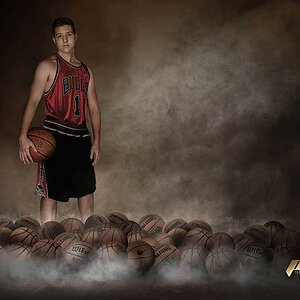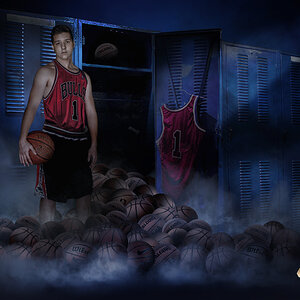- Joined
- May 1, 2008
- Messages
- 25,422
- Reaction score
- 5,001
- Location
- UK - England
- Website
- www.deviantart.com
- Can others edit my Photos
- Photos OK to edit
This is not a complete article, but I'm putting it here so I don't lose it and so I can get feedback as well as open the floor to other suggestions and points of info on the subject. So without further ado - here is how to get into macro photography fairly cheaply.
1) Extension tubes. These work by reducing the minimum focusing distance of the lens they are mounted with, whilst at the same time removing infinity focus. The result is a setup that can focus closer, but at the same time can't focus on far off subjects. They are an ideal way to cheaply get into macro shooting.
The rough maths for magnification given is:
(length of extension tubes (in mm) - divided by focal length of the lens ) + base magnifiaction of the lens = magnification : 1
For example a 50mm section of tubes on a 100mm lens gives:
50/100 = 0.5:1 (half life size - thus half the magnification you'd get from a dedicated macro lens).
Or on a 50mm lens
50/50 = 1:1 (which is the magnification ratio that a true macro lens gives)
I've left out the base magnification because outside of macro lenses most others are fairly weak; but the details should be listed on their spec sheets on manufacturer websites if you want them. In addition note that, from the maths, you can see that extension tubes give more magnification on shorter focal length lenses as opposed to longer focal length lenses.
There are two typical kinds of extension tube on the market; the ultra cheap £10 sort which have no electronic contacts in them. This means that you've lost all lens to body communication - you've no metering help; no auto focus and (most importantly) no aperture control. This makes them a challenge as you are forced to shoot wide open for every single shot*. I generally don't advise getting this sort because they make the process harder than it should be.
The second kind is the Kenko sort, which have metal contacts inside and thus retain lens to body communication. Autofocus often isn't used (manual focus is generally superior in most cases for macro work); but the metering and aperture control are very important.
Note Canon's own brand extension tubes are very overpriced for what you get and offer no build quality or functionality over the good 3rd party options like Kenko (that said £175 sounds very steep I would think closer to £100 more suitable).
2) Close up lens attachments/diopters/close up filters - these are attachments which attach to the end of the lens and function similar to extension tubes; reducing the minimum focusing distance and removing infinity focus. They do, however, operate opposite to extension tubes in that these give more magnification when used on longer focal length lenses as opposed to shorter ones (I'm not sure of the math to quote it however).
Cheap attachments are often easily found and should be avoided, whilst they will function the glass used (if it is glass) is often very poor quality and will drastically harm the quality of the photos you get. Typical 2,5,10 adaptor kits are often the cheap kind.
The Raynox series attachments are a totally different kind of lens, these are muiti (often 2) element options with quality glass and corrections. The result is that the image quality impact is very slight and often unnoticeable outside of studio tests at the extremes. Just like using a quality ND filter or quality 1.4 teleconverter - the close up lens attachments are a viable option for a quality result provided that you buy good quality makes.
Canon also makes a 500D and 250D attachment (I think these are lesser in power (diopter number) than the Raynox DCR 250), there are also one or two other brands which make quality attachments.
3) Reverse lens mounting; this works by taking a long focal length lens attached to the camera body and then reversing a shorter focal length lens infront it of backwards (front element to front element). The result is a reduction in focusing distance and thus a magnified image. This can be used to get some pretty strong magnifications and (provided you've the lenses) is the cheapest option as all you need is a reversing ring with the proper filter screw thread sizes to mount the lenses together (you might need stepping rings for some filter sizes).
The rough math here is:
Focal length of the lens attached to the body - divided by focal length of the lens reversed = magnification :1
eg: a 300mm lens on the body and a reversed 50mm lens would give:
300/50 = 6:1 (six times life size and very powerful magnification).
It should be noted that supporting the lens properly is important and that the use of light lenses (eg 50mm f1.8) is advised so that the front threads don't have too much pressure put upon them.
As you can see there are various ways to get into macro photography and they range in costs and suitability. Best option is to try the method that will give you a good working setup to experiment with. I typically say that beginners would be best to consider the Extension tubes because the kit lenses of most DSLRs give a good quality 18-55mm (or similar range) lens. This makes them ideal to be paired with extension tubes for taking macro photos.
Close up lens attachments I normally recommend to people with lenses over 100mm in focal length and often toward people who've already got a longer focal length macro lens (eg a 100mm macro) and want to experiment with higher magnifications.
Reverse lens mounting is also a good option for those who want to experiment with the (much harder) extremes of macro work, whilst still keeping very low budget.
Also note that nothing stops you using the above methods with a regular macro lens - boosting its performance should you want more than the 1:1 magnification it offers.
Note:
1:1 means:
Size of the subject as reflected on the sensor by the lens : size of the subject in real life.
1:1 is defined as "true macro" and is the magnification nearly all modern macro lenses give at their closest focusing distance. The Canon 50mm macro and Sigma 28mm macro are about the only two exceptions to this rule in giving less than full 1:1; although the canon 50mm can be combined with its own lifesize adaptor to give the full 1:1 capability (though the combined cost of both items is higher than many macro lenses).
Nearly all zooms that use macro in their name are often not capable of much more than 0.5:1 at the best; its a marketing move (oft used by 3rd party companies) to give the lens an appearance of having more than it normally does.
* Canon side you can trick the aperture blades on any lens to be closed constantly. This allows you to shoot with the blade shut, but also means you have to focus with them shut (which gives a darker viewfinder image to focus with).
To do this put the lens on the camera normally and set the aperture to the desired value. Then press and hold the "depth of field preview button" (that small button under the lens mount on the camera). Then whilst keeping the camera on and holding down the button - remove the lens from the body.
The aperture blades will now remain shut until you mount it to an off body and turn the body on (whereupon the reset to open). Note that this is normal lens operation (opening and closing of the blades) and should not cause any damage.
1) Extension tubes. These work by reducing the minimum focusing distance of the lens they are mounted with, whilst at the same time removing infinity focus. The result is a setup that can focus closer, but at the same time can't focus on far off subjects. They are an ideal way to cheaply get into macro shooting.
The rough maths for magnification given is:
(length of extension tubes (in mm) - divided by focal length of the lens ) + base magnifiaction of the lens = magnification : 1
For example a 50mm section of tubes on a 100mm lens gives:
50/100 = 0.5:1 (half life size - thus half the magnification you'd get from a dedicated macro lens).
Or on a 50mm lens
50/50 = 1:1 (which is the magnification ratio that a true macro lens gives)
I've left out the base magnification because outside of macro lenses most others are fairly weak; but the details should be listed on their spec sheets on manufacturer websites if you want them. In addition note that, from the maths, you can see that extension tubes give more magnification on shorter focal length lenses as opposed to longer focal length lenses.
There are two typical kinds of extension tube on the market; the ultra cheap £10 sort which have no electronic contacts in them. This means that you've lost all lens to body communication - you've no metering help; no auto focus and (most importantly) no aperture control. This makes them a challenge as you are forced to shoot wide open for every single shot*. I generally don't advise getting this sort because they make the process harder than it should be.
The second kind is the Kenko sort, which have metal contacts inside and thus retain lens to body communication. Autofocus often isn't used (manual focus is generally superior in most cases for macro work); but the metering and aperture control are very important.
Note Canon's own brand extension tubes are very overpriced for what you get and offer no build quality or functionality over the good 3rd party options like Kenko (that said £175 sounds very steep I would think closer to £100 more suitable).
2) Close up lens attachments/diopters/close up filters - these are attachments which attach to the end of the lens and function similar to extension tubes; reducing the minimum focusing distance and removing infinity focus. They do, however, operate opposite to extension tubes in that these give more magnification when used on longer focal length lenses as opposed to shorter ones (I'm not sure of the math to quote it however).
Cheap attachments are often easily found and should be avoided, whilst they will function the glass used (if it is glass) is often very poor quality and will drastically harm the quality of the photos you get. Typical 2,5,10 adaptor kits are often the cheap kind.
The Raynox series attachments are a totally different kind of lens, these are muiti (often 2) element options with quality glass and corrections. The result is that the image quality impact is very slight and often unnoticeable outside of studio tests at the extremes. Just like using a quality ND filter or quality 1.4 teleconverter - the close up lens attachments are a viable option for a quality result provided that you buy good quality makes.
Canon also makes a 500D and 250D attachment (I think these are lesser in power (diopter number) than the Raynox DCR 250), there are also one or two other brands which make quality attachments.
3) Reverse lens mounting; this works by taking a long focal length lens attached to the camera body and then reversing a shorter focal length lens infront it of backwards (front element to front element). The result is a reduction in focusing distance and thus a magnified image. This can be used to get some pretty strong magnifications and (provided you've the lenses) is the cheapest option as all you need is a reversing ring with the proper filter screw thread sizes to mount the lenses together (you might need stepping rings for some filter sizes).
The rough math here is:
Focal length of the lens attached to the body - divided by focal length of the lens reversed = magnification :1
eg: a 300mm lens on the body and a reversed 50mm lens would give:
300/50 = 6:1 (six times life size and very powerful magnification).
It should be noted that supporting the lens properly is important and that the use of light lenses (eg 50mm f1.8) is advised so that the front threads don't have too much pressure put upon them.
As you can see there are various ways to get into macro photography and they range in costs and suitability. Best option is to try the method that will give you a good working setup to experiment with. I typically say that beginners would be best to consider the Extension tubes because the kit lenses of most DSLRs give a good quality 18-55mm (or similar range) lens. This makes them ideal to be paired with extension tubes for taking macro photos.
Close up lens attachments I normally recommend to people with lenses over 100mm in focal length and often toward people who've already got a longer focal length macro lens (eg a 100mm macro) and want to experiment with higher magnifications.
Reverse lens mounting is also a good option for those who want to experiment with the (much harder) extremes of macro work, whilst still keeping very low budget.
Also note that nothing stops you using the above methods with a regular macro lens - boosting its performance should you want more than the 1:1 magnification it offers.
Note:
1:1 means:
Size of the subject as reflected on the sensor by the lens : size of the subject in real life.
1:1 is defined as "true macro" and is the magnification nearly all modern macro lenses give at their closest focusing distance. The Canon 50mm macro and Sigma 28mm macro are about the only two exceptions to this rule in giving less than full 1:1; although the canon 50mm can be combined with its own lifesize adaptor to give the full 1:1 capability (though the combined cost of both items is higher than many macro lenses).
Nearly all zooms that use macro in their name are often not capable of much more than 0.5:1 at the best; its a marketing move (oft used by 3rd party companies) to give the lens an appearance of having more than it normally does.
* Canon side you can trick the aperture blades on any lens to be closed constantly. This allows you to shoot with the blade shut, but also means you have to focus with them shut (which gives a darker viewfinder image to focus with).
To do this put the lens on the camera normally and set the aperture to the desired value. Then press and hold the "depth of field preview button" (that small button under the lens mount on the camera). Then whilst keeping the camera on and holding down the button - remove the lens from the body.
The aperture blades will now remain shut until you mount it to an off body and turn the body on (whereupon the reset to open). Note that this is normal lens operation (opening and closing of the blades) and should not cause any damage.





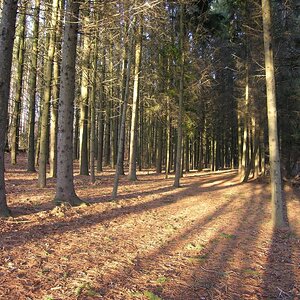
![[No title]](/data/xfmg/thumbnail/39/39443-45e1b162b6c7c1d8ebbc8faf5623b705.jpg?1619739034)
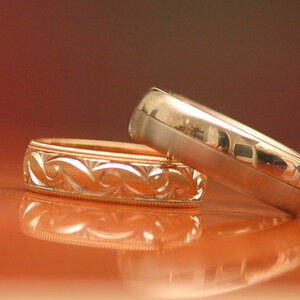
![[No title]](/data/xfmg/thumbnail/36/36401-dfb1077e5917eb47c5acf9c208e7be2a.jpg?1619737552)
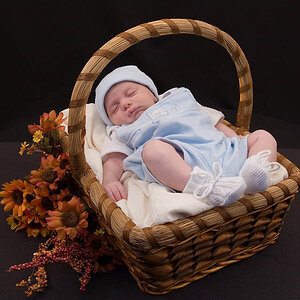
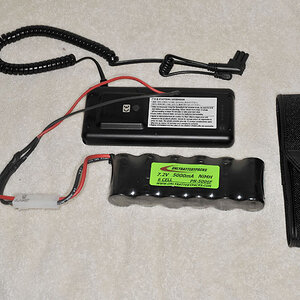
![[No title]](/data/xfmg/thumbnail/39/39509-3c2c5856429b4b8ff3cf44cd3b2afa8c.jpg?1619739064)
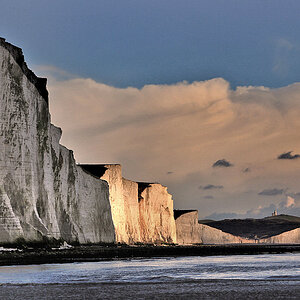
![[No title]](/data/xfmg/thumbnail/39/39447-6e7679723d775935851f055bae9712ba.jpg?1619739036)
